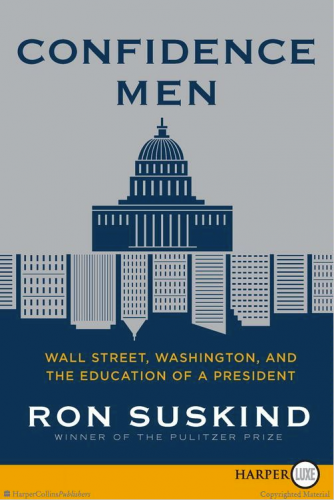Yves Smith points to this passage from Ron Suskind’s Confidence Men, about the business model behind private-equity funds:
Charlie Hallac, a top deputy to Larry Fink at BlackRock and head of the firm’s analytical arm, BlackRock Solutions, distilled it down with precision: “Of every twenty deals, the large aggressive PE firm expects seventeen of the companies to fail under the added debt. Two have to survive and one has to hit big for the firm to have a fairly strong return on its PE fund. So that’s three out of twenty.”
 So you’ve got twenty companies that are going concerns with successful operations. Those companies’ status as going concerns constitutes the bulk of their real-capital value. Call it “good will” in the purchase and sale balance sheets, or “organizational capital,” or whatever intangible noun you choose, but that “going concern” status is the thing that turns a bunch of desks and computers into, for instance, a successful IT company. Think: operational methods, management systems, employee contracts, intellectual property that only has value in the context of that company’s operations, and endless et ceteras.
So you’ve got twenty companies that are going concerns with successful operations. Those companies’ status as going concerns constitutes the bulk of their real-capital value. Call it “good will” in the purchase and sale balance sheets, or “organizational capital,” or whatever intangible noun you choose, but that “going concern” status is the thing that turns a bunch of desks and computers into, for instance, a successful IT company. Think: operational methods, management systems, employee contracts, intellectual property that only has value in the context of that company’s operations, and endless et ceteras.
But for Wall Street, a company’s real assets (very real, despite being largely intangible) are perceived as a single financial asset, one that can be manipulated along with others, and in combination with others’ used to manipulate yet other financial assets, all in a way that benefits traders in financial assets (them).
Take those twenty companies and get the banks (including shadow banks) to issue loans — to print new money that they’ll lend to the companies against promise of their future receipts. The fixed and inexorable demands to service that debt make all the companies much more fragile and vulnerable to negative market shifts — competition, downturns, technology shocks, etc. (And meanwhile, the PE firm installs management that strips away any organizational assets that don’t have immediate returns, that only provide long-term strength, stability, and resilience.)
Because the debt they’re saddled with makes them so fragile, only one of the companies does well — and it does extraordinarily well, because its bets on real-capital investment using the borrowed money happen to succeed. Seventeen crash and burn.
For the PE firm, the results are dreamy. Because they leveraged their investment in that one firm so heavily — they own rights to future profits on a billion-dollar stake, for instance, when they only invested a hundred million — they make a tidy profit on the whole portfolio. In effect — as if by magic — much of the newly printed money lent to the twenty companies is embodied in the financial value of the one successful company.
But the real assets of those other seventeen companies — their status as going concerns — disappears. Some portion of that real capital is preserved in the bankruptcy process, of course, and through fire-sale dismemberment. But a great deal of it — the organizational capital that is based on the companies’ existence as coherent, ongoing organizations — evaporates in a whisp of smoke.
Is this what proponents of capitalism mean when they talk about “capital accumulation”?
Comments
One response to “#OWS — How Wall Street Capital Destroys Capitalism”
I don’t normally plug my site (honest to God). But I want to plug my site in order to plug a book (no not my book). I hope everyone who reads this site, and also the host Mr Roth will run out and buy this book. It’s a great book and already marked down a bit from its original price. RUN OUT AND BUY IT FOR FAMILY AND FRIENDS!!!!. Menzie Chinn’s “Lost Decades”. Check out the discussion here:
http://grahambrokethemold.blogspot.com/2011/10/discussion-hosted-by-imf-on-menzie.html